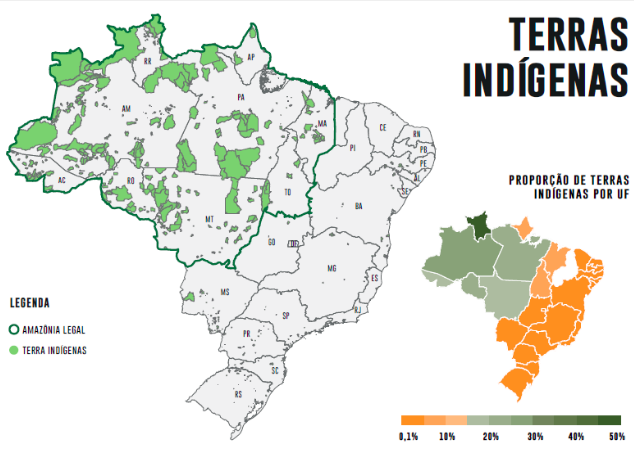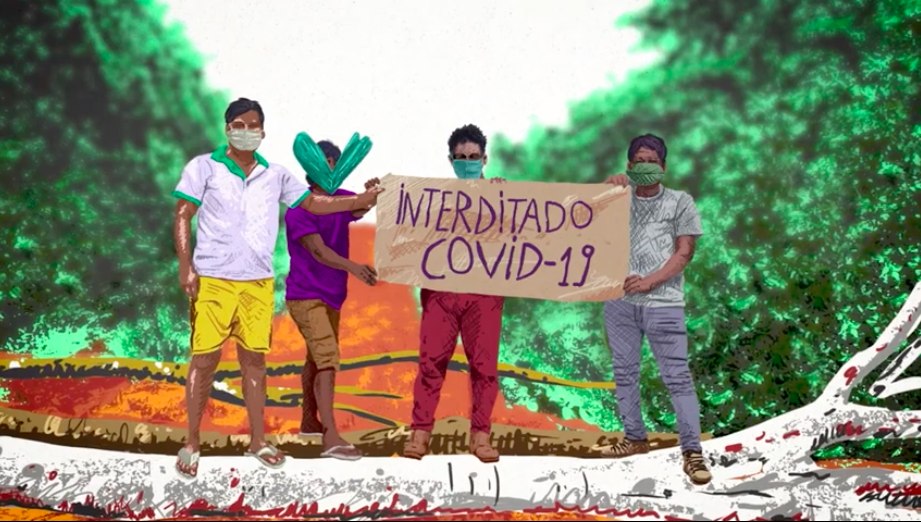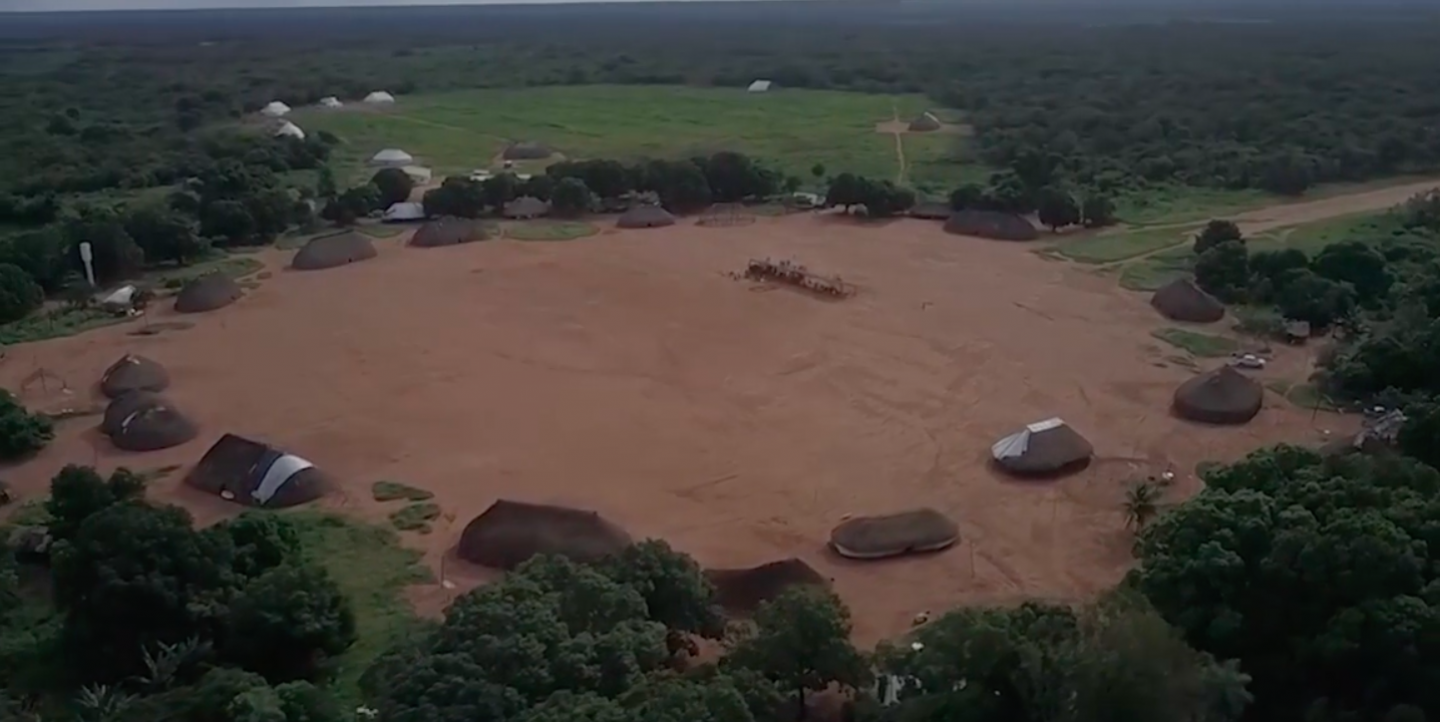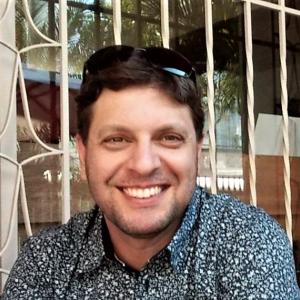While COVID-19 cases soar and political instability intensifies in Brazil, Indigenous peoples are blatantly threatened by Jair Bolsonaro's government. Inspired by the country's military dictatorship (1964-1985), his administration has halted land demarcations, curbed the rights of Indigenous peoples and forced their assimilation.
Brazil has almost 900,000 Indigenous inhabitants from 255 peoples, who live on 723 Indigenous lands. These lands account for 14% of the national territory, or about 1.2 million square kilometers — an area similar to that of South Africa. Created as required by Brazil's Federal Constitution, these lands are coveted by agribusiness and mining and energy sectors, which have exerted more influence in the Bolsonaro government.
Journalists cannot overlook these issues when covering the pandemic, which only adds fuel to this life or death scenario.

Territorial and environmental setbacks
The demarcations of Indigenous lands have fallen since president Fernando Henrique Cardoso's second term (1999-2002) and have been discontinued by Bolsonaro, according to Brazilian NGO Instituto Socioambiental (ISA).
While there are 237 areas awaiting demarcation, a recent measure by the National Indian Foundation (Funai, in Portuguese) — a governmental agency created to protect Indigenous interests — opened the way for agriculture and other activities on these lands. Among these cases, there are eight areas that shelter isolated populations from contact with urban society.
Overseeing these cases is the president of Funai, Marcelo Augusto Xavier da Silva, a police officer with ties to the agribusiness sector. Under him is the head of Funai's office for Isolated Indians and Recent Contact, Ricardo Lopes Dias, a former missionary who worked for the New Tribes Mission in Brazil, an organization created in the 1950s by American missionaries to evangelize Indigenous peoples in Brazil.
Both appointments alarmed organizations in defense of Indigenous peoples.
Since then, deforestation on Indigenous lands has skyrocketed, increasing by 80% from August 2018 to July 2019, as compared to the previous period, according to ISA. The invasion of these areas by loggers, miners and religious groups has doubled, and violence in the countryside hit a 15-year high, as I show in my report for the Tierra de Resistentes project. Indigenous peoples, in particular, are also increasingly victims of threats, murders and harassment.
[Read more: How to report on climate change during a pandemic]
Concurrent crises
The coordinator of the Association of Indigenous Peoples in Brazil (APIB), Sonia Guajajara, declared that Indigenous peoples are "between a rock and a hard place," referring to the escalating aggressions and the arrival of COVID-19. The coronavirus only compounds the other violations of Indigenous rights that continue to occur, she said.
Even with insufficient testing and official figures that are far from reality, Brazil registered almost 5,000 new COVID-19 cases in a single day on April 28, and about 500 deaths. The spread of the virus in the 27 states and the Federal District can be seen on the GeoCovid-19 platform, which collects information from state health agencies.
Federal, state and municipal agencies do not have a systematic record of COVID-19 cases among Indigenous people living in cities. The Ministry of Health only states they must be cared for by the Unified Health System. According to Brazil's Institute of Geography and Statistics, 36% of Brazilian Indigenous people — more than 320,000 individuals — live in urban areas.
The precariousness of health systems in the Amazon region makes the situation for these people even worse. In Amazonas state, hospitals and clinics have collapsed, and bodies lie in the open in Manaus, where about 30,000 Indigenous people live. A similar situation is expected for Belém, the capital of Pará state, and Macapá, the capital of Amapá. At the same time, the new coronavirus has been recorded in numerous cities neighboring Indigenous areas in Mato Grosso, where 42,000 native Brazilians live.
[Read more: Brazilian favela journalists lead actions to raise awareness about COVID-19]

Indigenous peoples mobilize against the pandemic
In less than a month, two dozen Indigenous groups were affected by the coronavirus in villages and cities, mainly in the Amazon, but also in the northeast and southeast regions of Brazil. A list of COVID-19 cases was compiled by a network of APIB collaborators and the Coordination of Indigenous Organizations in the Brazilian Amazon. According to these organizations, as of early May, more than 141 Indigenous people were infected in 29 different communities, and at least 30 people had died.
As Indigenous and traditional populations are often left out of Brazilian public policies, grassroots organizations have single-handedly blocked access to Indigenous villages, isolating them from outsiders — including researchers and journalists. They have also created web pages and channels on social media to raise awareness about the pandemic, and how to cope with COVID-19.
Quarentena Indígena, a website launched by APIB, presents up-to-date information on the COVID-19 situation, and photos and videos of Indigenous leaders and researchers. APIB also publishes daily alerts on the pandemic, and hosts WhatsApp groups (Conteúdos APIB and Conteúdos APIB 2) for disseminating information, sometimes in Indigenous languages.
“We, from APIB and the entire Indigenous movement are facing this moment with extreme concern. We might suffer another cycle of genocide of our people," states the organization in one of its alerts. "The invasions and crimes committed by loggers, prospectors and land grabbers continue in our territories, as the threat of virus contamination is advancing every day.”
Aldem Bourscheit is an independent journalist based in Brasília, focused on stories about nature conservation, science, traditional and indigenous communities. Bourscheit collaborates with media outlets and non-governmental organizations in Brazil and abroad. He is a member of the Brazilian Network of Environmental Journalism and of the Commission on Education and Communication of the International Union for the Conservation of Nature (IUCN, in Portuguese).
Main and secondary images: screen shots of a video by @coletivo_kuikuro_de_cinema about the coronavirus pandemic, shared by the Association of Indigenous Peoples of Brazil.


